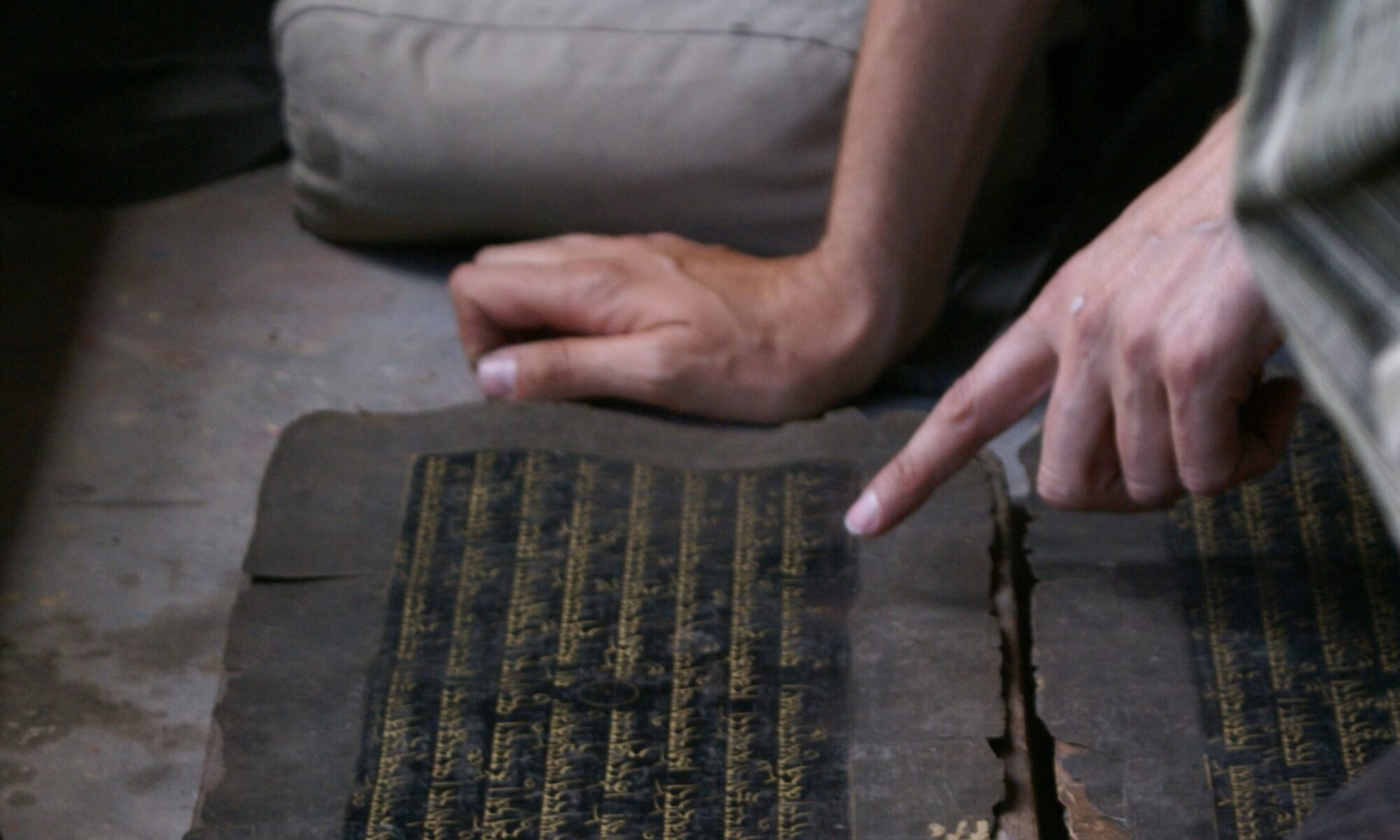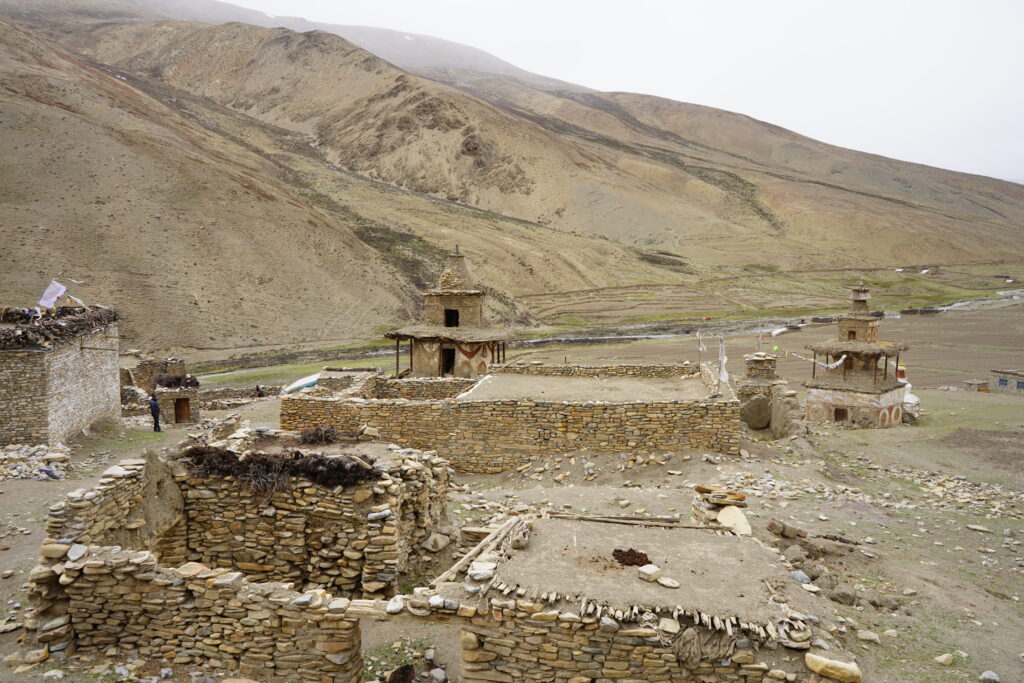
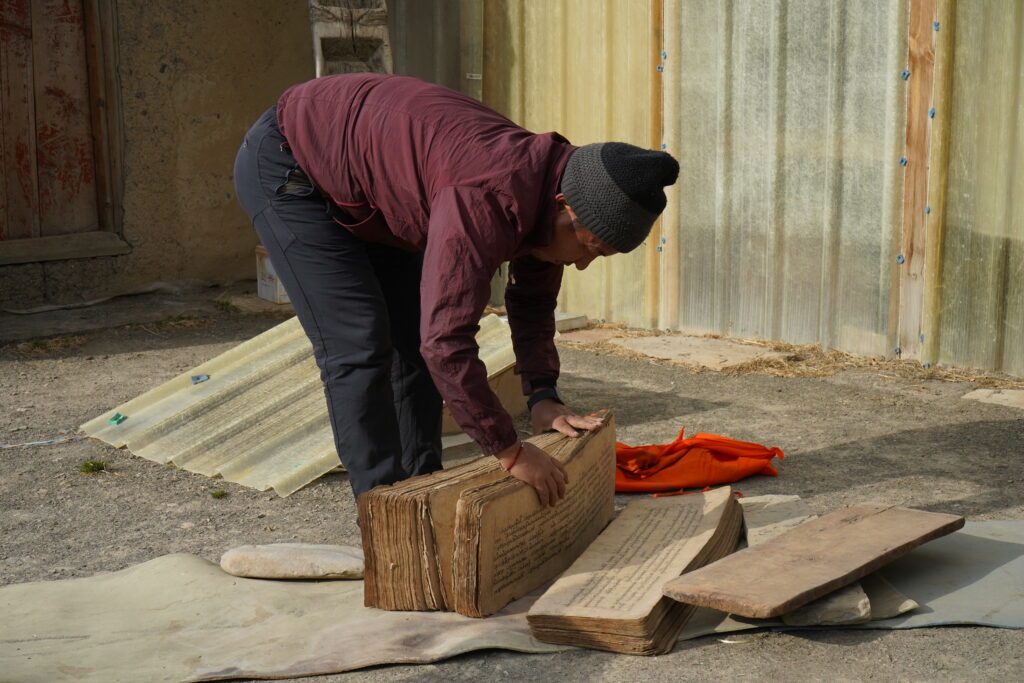
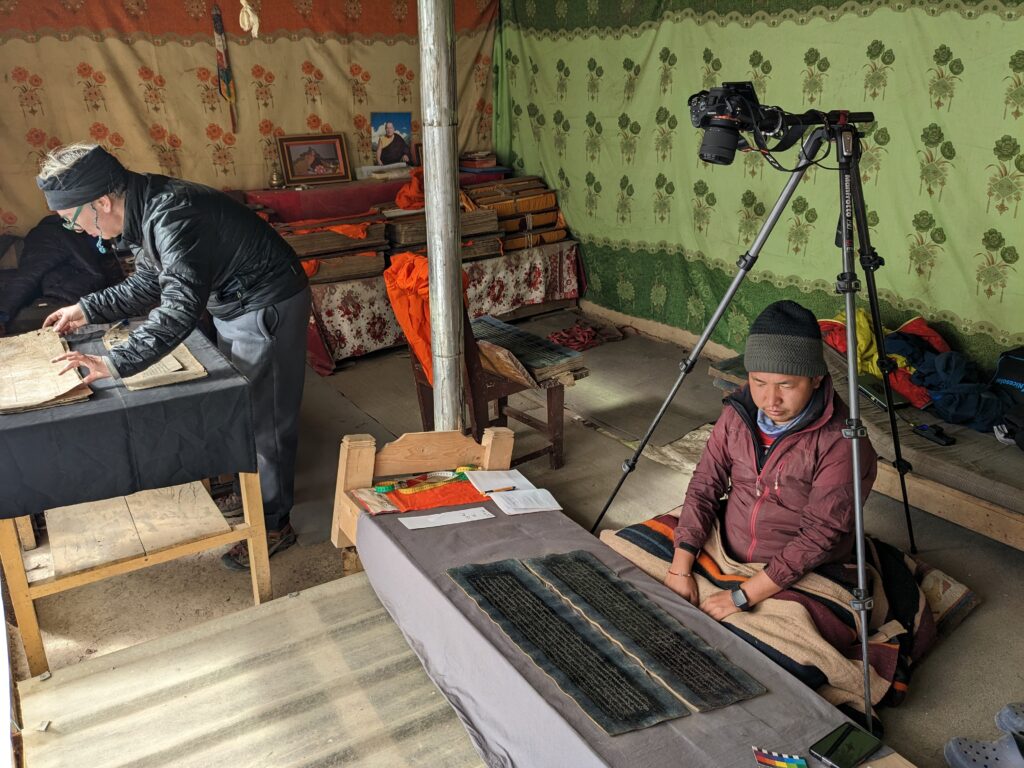
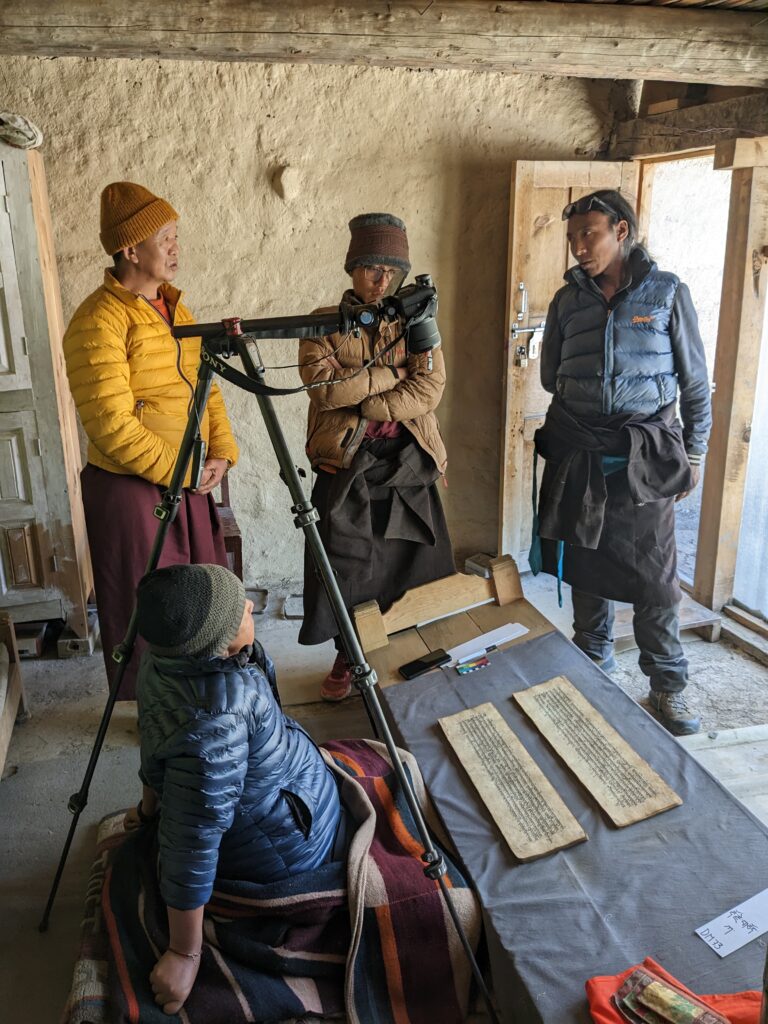
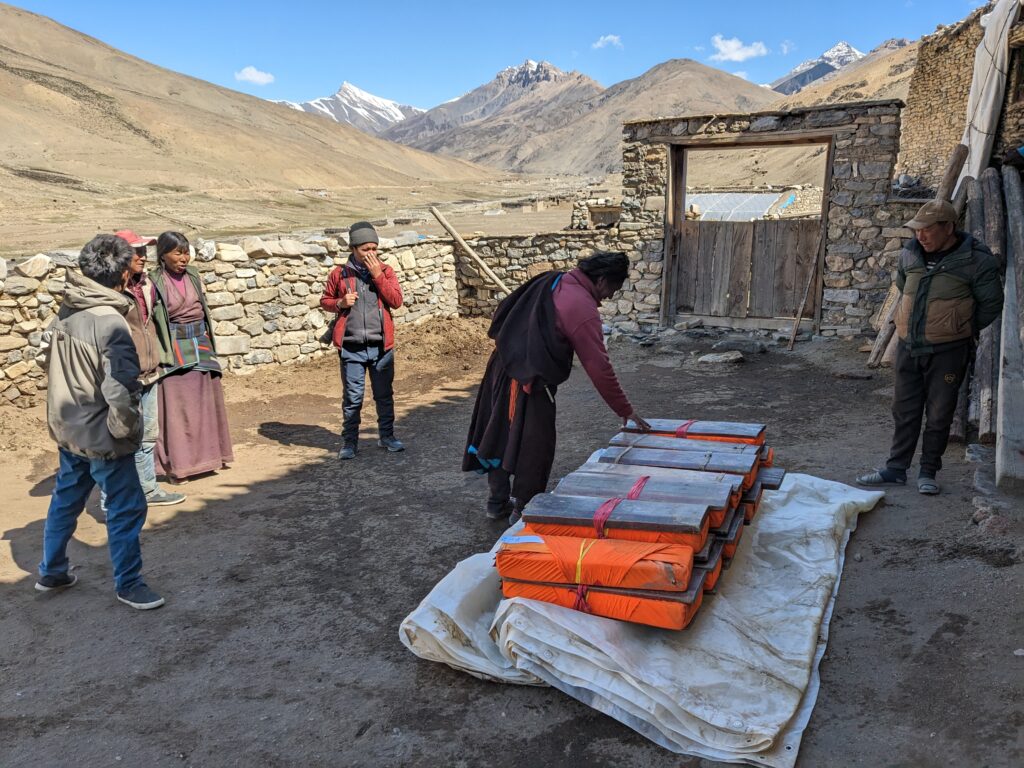
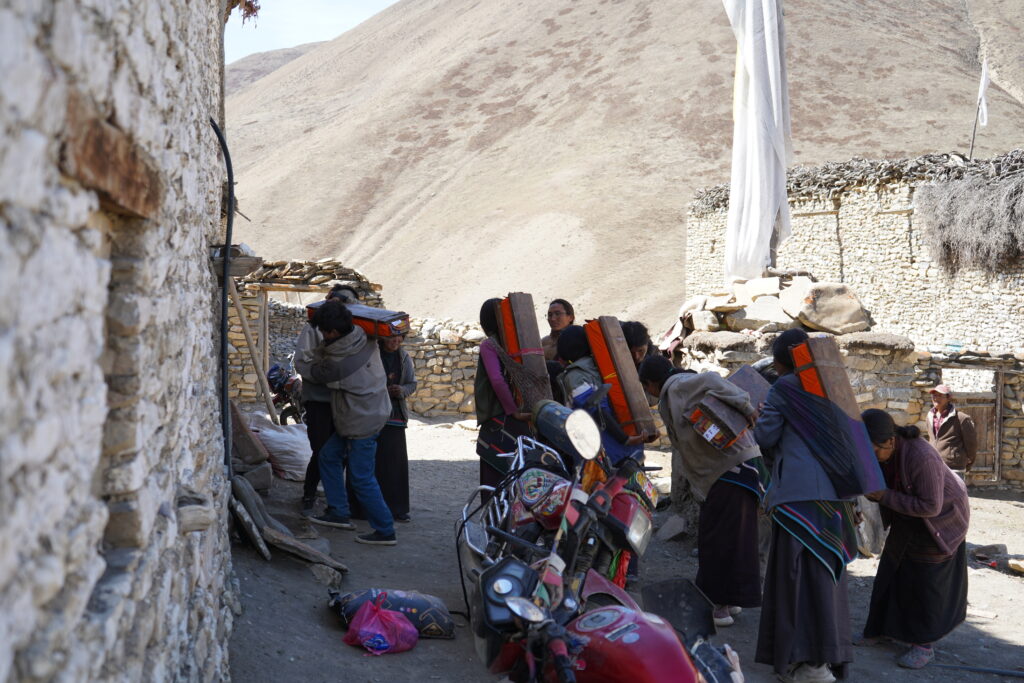
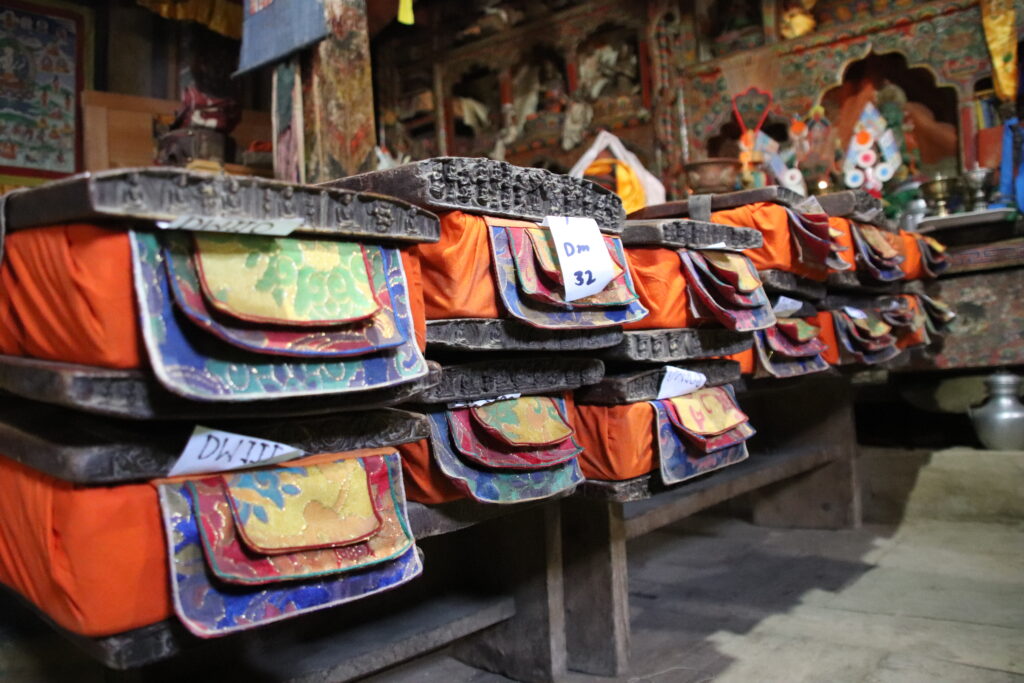

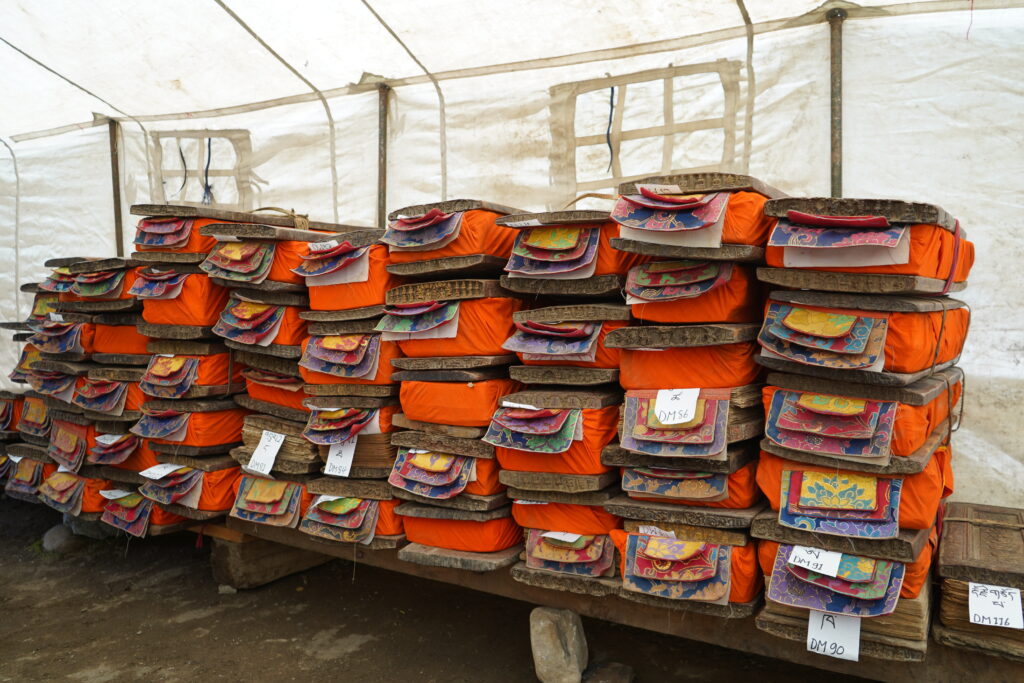
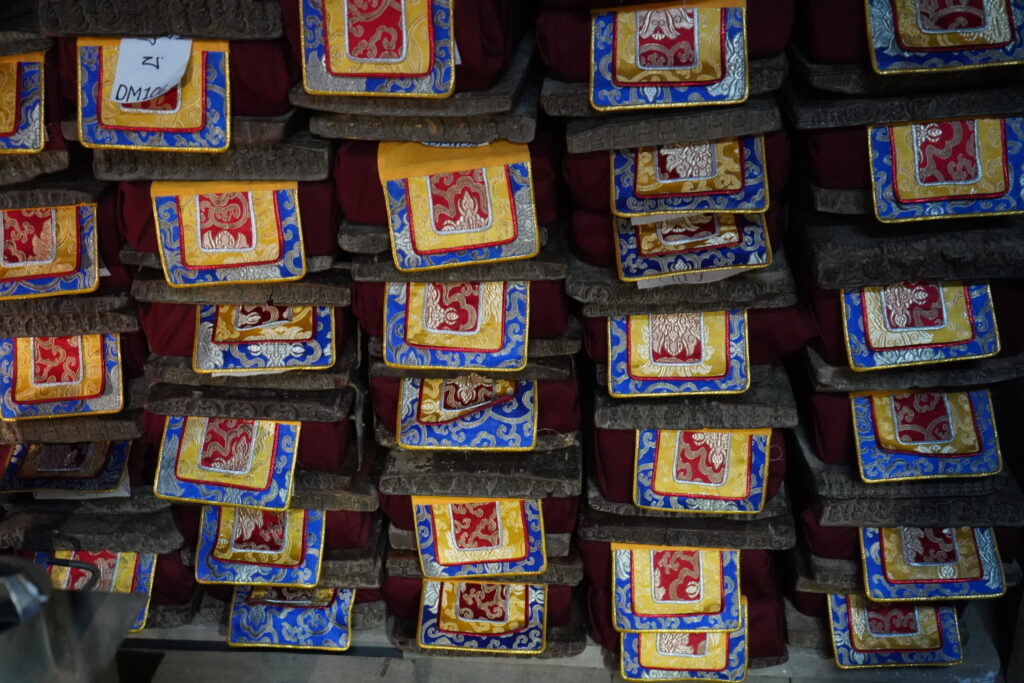
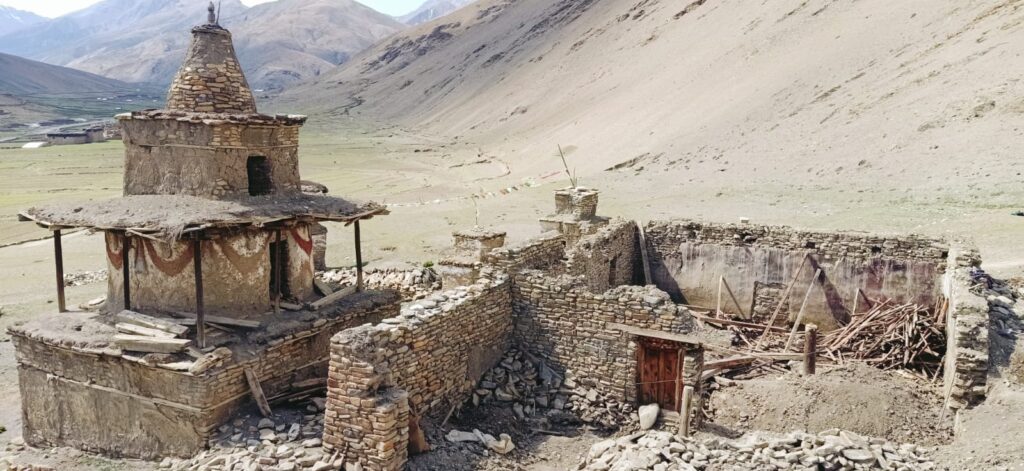
The temple of Drakmar (brag dmar / drag dmar) along with the neighboring temple of Ghagar (gad dkar) is located in a small hamlet in the centre of the Tarap (rta rab) valley that is known as Ghagar-Drakmar, referring to both religious institutions. Despite its high altitude of around 4.100-4.300 meters, the entire area is nowadays considered being part of Lower Dolpo.
Ostensibly, Drakmar Monastery is one of the oldest religious institutions in the region. Originally it had been built as a two-storey structure, which deteriorated over time. During a substantial restructuring of the temple in 2008/2009, the second storey of the building and a sacred chamber at the back of the original assembly hall that had contained high quality wall paintings were dismantled. The 2015 earthquake led to further damage, leaving the existing structures in a very desolate condition, with water leakage affecting the building as well as its interiors. In June 2023, the old temple of Drakmar was demolished with plans to replace it with a new building in near future.
TMPV visited the temple for the first time in 2019 and given its desolate state and the precarious condition of its manuscript collection had called for immediate action. After some negotiations, the manuscripts were shifted to a dry and safe location in September 2022. At that time also the first thirty-two volumes of the collection were digitized. During a third visit in May 2023, all remaining volumes of the collection were digitized in their entirety, and a detailed documentation of their material features was accomplished by Agnieszka Helman-Ważny (University of Hamburg), an expert on paper making and the production of Tibetan manuscripts.
Altogether, Drakmar preserves 116 manuscripts, some of which were bound together as several wooden covers were missing from the collection. The volumes constitute different sets of canonical collections, which were obviously produced and added to the overall collection at different times. The most substantial parts of the Drakmar collection are a Sūtra collection, complete in thirty volumes, three sets of the Śatasāhasrikāprajñāpāramitāsūtra (‘bum), a larger Tantra section, and fragments of other sets as well as individual texts of Tibetan Buddhist canonical literature.
After documentation, all volumes were equipped with new cloth covers and new content labels. The new wrapping of the volumes was also accompanied by a public reading of some of the volumes in nearby Ghagar Monastery. TMPV documented this event through video and audio recordings, including several interviews with the participants. It is planned to share this material through a short documentary movie in near future.
Further, this opportunity was also used to digitize a manuscript collection of the rnying ma rgyud ‘bum (“Old Tantra”) housed at Ghagar Monastery. According to a first inspection, this version, fragmentary in twenty-five volumes, contains a sofar unknown recension of Old Tantra.
